Saas Keyword Research : A Complete Guide for 2024
Newbies may find it frightening to dive into the ocean of SaaS SEO, but don’t worry! If you are looking for a complete guide to understanding the SaaS keyword research process, you have come to the perfect place.
This comprehensive blog, compiled from insights from leading industry experts, is your one-stop shop for everything related to SaaS keyword research.
Whether you’re just getting started or seeking to improve your methods, we’ve covered you with in-depth analysis, the exact process, secret tips, and tricks for generating more targeted traffic to your website. Let’s dive into the depths of this SaaS keyword research guide.
What is SaaS Keyword Research?
SaaS keyword research is a critical element in the strategy of any Software as a Service (SaaS) company aiming to enhance its online visibility and attract targeted traffic to its website. This long process involves identifying and analyzing the specific terms, words and phrases that potential customers use in search engines, such as Google, when looking for products or solutions that the company offers or the problems that these products or solutions can solve.
The scope of SaaS keyword research extends beyond just commercial or branded keywords. For instance, a company like Mailchimp, known for its email automation tools, cannot solely focus on creating content around keywords such as “Mailchimp vs. SendX” or “Mailchimp features.”
It is essential for such a company to also target broader keywords that capture the needs of potential customers, like “best email automation tools” or “what is email automation.” These broader keywords are crucial in driving targeted traffic to the company’s website, where visitors can be further engaged through well-placed calls to action (CTAs), leading them towards free trial sign-ups or product demonstrations.
Once the relevant keywords are identified through thorough research, they can be strategically employed in the company’s on-page and off-page SEO (Search Engine Optimization) campaigns. This improves the website’s ranking on search engine results pages (SERPs) and raises its chance of obtaining a more relevant audience interested in the product or service that is being provided.
Join SaaS Marketing getting one growth strategy every week
- Demand gen playbooks
- 2-5 minute read times
- 0.5% unsubscribe rate
The Saas SEO Keyword Research Process
In the competitive landscape of Software as a Service (SaaS), executing a precise and effective SEO keyword research process is pivotal for crafting impactful marketing campaigns. Random selection or mere guesswork in choosing keywords will not suffice. At Rank and Trend, we employ a meticulously structured step-by-step process for our campaigns and SaaS clientele, ensuring a targeted approach that delivers results.

Brainstorm a Seed List of Topics and Terms
The initial phase involves gathering a foundational list of topics and terms, serving as the cornerstone of your keyword strategy. This stage calls for a collaborative effort, bringing together various teams within your organization—customer support, marketing, sales, content, and others—to garner comprehensive insights.
There are two primary methods to brainstorm these terms:
Examine Customer Touchpoints
Explore the common questions, words, and phrases customers use during interactions with your brand, product, or team, such as during onboarding or website visits.
For instance, if your customer success team notices frequent queries about how your project management tool differentiates from competitors, this insight could lead to targeting comparison-related topics and terms.
Utilize Google for Initial Ideas
Input basic keywords related to your niche, like “project management,” on Google and analyze the related terms and ideas that appear. This step is more about gathering a broad list rather than focusing on specifics like keyword difficulty or search volume.
Identify Search Competitors Using Seed Terms
With your list of seed terms, search on Google to identify your SERP competitors for these terms. This includes direct competitors (companies offering similar products) and indirect competitors (entities catering to a similar audience but not offering the same products).
For example, while companies like Proofhub may be direct competitors, a publication like Forbes, ranking for “best project management tools,” would be considered an indirect competitor. Prioritize analyzing direct competitors first, noting the keywords they target and rank for, and then look for opportunities they may have overlooked.
Utilize a Keyword Tool
Having curated a list of potential keywords, the next step involves employing an SEO tool of your choice, such as Ahrefs, to delve into data and metrics associated with your keywords.
This analysis aids in filtering out keywords that might be too challenging to rank for or may not provide the desired level of engagement or traffic.
Tools like Ahrefs offer insights into keyword difficulty, search volume, estimated clicks, and clicks per search, among other metrics. Additionally, Ahrefs’ keyword generator tool can further assist in expanding your list with related keyword ideas.
Incorporating VoC, or Voice of the Customer, into your SaaS keyword research strategy can profoundly impact your SEO and content marketing efforts. VoC is mainly a research method that captures customers’ expectations, preferences, and aversions.
By analyzing customer feedback, reviews, and inquiries, you can uncover many keywords and phrases that real users use to describe their needs and pain points.
Leveraging these insights allows you to tailor your content more precisely to your target audience, enhancing engagement and conversion rates.
This structured approach to SaaS SEO keyword research streamlines the process and ensures that your marketing campaigns are built on a foundation of data-driven insights, maximizing their effectiveness and reach.
Select Keyword Intent
Selecting keyword intent is critical in refining your keyword strategy, particularly for SaaS companies aiming to enhance their marketing efforts. Understanding the intent behind the searches that lead potential customers to your site allows you to make content that directly addresses their requirements and concerns, effectively guiding them through the buyer’s journey. Here’s how to effectively select keyword intent:
Before going into keyword selection, it’s important to understand the four categories of search intent: informational, navigational, commercial, and transactional.
Informational Intent: Users are seeking information. These queries often start with “how to,” “what is,” or “why does.”
Navigational Intent: Users are trying to reach a specific website or page. Brand names or specific product names are common in these searches.
Commercial Intent: Users are considering a purchase and want to compare options or learn more about specific products.
Transactional Intent: Users are ready to buy and are looking for the best place or way to make their purchase.
Keyword modifiers can give you clues about the intent. Words like “buy,” “deal,” or “coupon” indicate transactional intent, while “how to,” “ways to,” or “tips” suggest informational intent. Adjust your seed list by adding or prioritizing keywords based on the type of content you plan to develop.
Conduct searches for your seed keywords and analyze the type of content that ranks on the first page of SERPs. The intent is likely informational if the results are primarily blog posts or articles.
The intent might be transactional or commercial if you see product pages or categories.
This analysis gives insight into what search engines and users consider relevant for those terms.

Consider Your Customer Journey
Map your keywords to different stages of your customer journey. Early-stage leads might be more interested in informational content that helps them understand their problems, while those closer to purchase will respond better to commercial or transactional keywords. This step ensures that you’re driving traffic and attracting visitors at the right stage to engage with your content meaningfully.
Marketing Qualified Lead (MQL) and Sales Qualified Lead (SQL):
Understanding the concept of MQL, or Marketing Qualified Lead, is crucial in the SaaS keyword research process. An MQL refers to a lead who has shown interest in your product or service based on marketing efforts and is likelier to become a customer than other leads.
By targeting keywords that resonate with the challenges and needs of your ideal MQL, you can create content that attracts and nurtures these potential customers effectively, guiding them further down the sales funnel.
Transitioning from MQLs to SQLs, or Sales-Qualified Leads, marks a pivotal customer journey. SQLs are leads evaluated by marketing and sales teams and are deemed ready for direct sales engagement.
In SaaS keyword research, focusing on keywords with a high intent for purchase or detailed product inquiries can significantly increase the chances of converting MQLs into SQLs. This strategic approach ensures that your content attracts potential users and aligns with the specific criteria that qualify them for sales outreach.
Leverage Keyword Tools
Use keyword research tools that provide insights into intent by showing the types of content that rank for specific keywords. Some tools like Semrush categorize keywords by intent, making selecting the right keywords for your content strategy easier.
Select Keywords That Convert
Selecting keywords that effectively convert searchers into website visitors is critical to a successful search engine optimization (SEO) strategy. This involves understanding which keywords have the potential for high traffic and which are most likely to result in meaningful engagement and conversions for your specific brand and objectives.
Here’s a comprehensive approach to identifying and leveraging these high-converting keywords to enhance your SEO efforts.
Assess your brand’s current position:
Initiating your keyword selection process with a thorough evaluation of your brand’s current standing is essential. This involves a deep dive into understanding which keywords your brand is ranking for right now and identifying the gaps and opportunities in your existing SEO strategy.
Utilize tools such as Google Search Console, Semrush, Moz, or Ahrefs to analyze your current keyword performance, focusing on those with high search volumes that are closely aligned with your brand’s offerings and values.
Remember, this is not a one-time task. As your brand evolves, so should your keyword strategy to reflect changes in your products, services, and market positioning.
Understand search intent across the sales funnel:
Begin by categorizing potential keywords according to the searcher’s intention behind each query. Are they looking for information, seeking a solution to a problem, or ready to purchase?
Align these intentions with different stages of the sales funnel to ensure you target terms that attract visitors and guide them through their buyer’s journey.
For instance, a SaaS company at the top of the funnel may focus on broad informational terms like “What is SaaS?” to build awareness. Conversely, to target users closer to a purchase decision, more specific commercial intent keywords such as “SaaS to reduce spend” would be more appropriate.
Striking a balance across the funnel stages ensures a comprehensive SEO strategy that captures potential customers at every phase of their journey.
Embrace the Power of Long-Tail Keywords
While short-tail keywords boast higher search volumes, long-tail keywords—though seemingly less attractive due to their lower search volume—can be significantly more effective at converting. These longer, more specific keyword phrases typically indicate a searcher with a clearer intent, making them more likely to convert when they land on your website. Long-tail keywords allow for more precise targeting, offering the dual benefit of attracting more qualified traffic and facing less competition from other websites.
Continuously Refine Your Approach
Keyword intent isn’t static. As market trends shift and your product evolves, the way people search and the intent behind their searches may also change. Review your keyword strategy and adjust your content to stay aligned with your audience’s needs.
By meticulously selecting keyword intent, SaaS companies can craft more targeted, compelling content that resonates with potential customers at every stage of their journey.
This improves SEO performance and significantly enhances the overall effectiveness of your digital marketing campaigns.
Effects of Selecting The Wrong Keywords
Selecting the wrong keyword for your SEO efforts can significantly derail your content’s visibility and overall online success. The ramifications of this misstep are multi-faceted and can lead to many undesirable outcomes.
Firstly, targeting highly competitive keywords without a realistic strategy can lead to your content being lost in the vast ocean of search results. The effort and resources required to rank for such terms are substantial, often necessitating a long-term, dedicated approach that may still not yield the desired outcomes due to stiff competition.
Secondly, opting for keywords that lack sufficient search volume can also be counterproductive. While it may seem easier to rank for these terms due to lower competition, the payoff may not justify the investment. A top ranking for a keyword that few people search for will not drive significant traffic to your site, rendering your efforts ineffective.
Moreover, the relevance of the chosen keywords to your business and content is paramount. Keywords not closely tied to the products, services, or information you offer may attract traffic, but not the kind that converts into tangible business outcomes. It’s essential to focus on keywords that potential users are likely to use when searching for offerings similar to yours.
The longevity of keywords is another critical consideration. Optimizing for keywords that are only popular or relevant for a short period can lead to a temporary spike in traffic but not sustained growth. Targeting keywords with consistent search volumes over time is more beneficial to ensure a steady flow of visitors.
Lastly, simply incorporating a keyword into your content is insufficient for effective SEO. Search engines like Google look for comprehensive coverage of a topic, which means using relevant keywords naturally and strategically throughout your content to signal its relevance.
Difference Between Beginner Keyword Research and Expert Keyword Research
The difference between beginner and expert keyword research can significantly influence the effectiveness of a company’s SEO strategy, especially for SaaS businesses aiming to attract the right audience and convert them into paying customers. Understanding this distinction is crucial for optimizing marketing efforts and ensuring resources are not wasted on low-impact activities.
Beginner Keyword Research
Beginner keyword research often starts with the basics: identifying relevant keywords that describe the product or service offered. This approach typically focuses on high-volume keywords assuming that more searches equate to a higher potential for traffic.
Beginners might use free or basic tools to gather a list of keywords related to their industry, product features, and competitor names. The emphasis is usually on casting a wide net, with a less nuanced understanding of the searcher’s intent behind each keyword.
Common mistakes in beginner keyword research include:
Overemphasis on Search Volume: Prioritizing keywords with the highest search volume without considering the intent or relevance to the product can lead to attracting a lot of traffic that has little interest in the actual offering.
Neglecting Long-Tail Keywords: Beginners often overlook long-tail keywords, which are longer and more specific words. These long-tail keywords may have very lower search volumes but often indicate a higher buying intent.
Ignoring Searcher Intent: Not all searches are created equal. A beginner might not differentiate between someone looking for information and someone ready to purchase, leading to content that doesn’t meet the needs of potential buyers.
Expert Keyword Research
Expert keyword research, on the other hand, is a more sophisticated and strategic process. It involves identifying relevant keywords and understanding the nuances of searcher intent and the competitive landscape. Experts utilize advanced tools and techniques to analyze keywords, considering search volume, keyword difficulty, and the intent behind searches. They focus on identifying keywords indicating a readiness to buy or a problem their product can solve.
Key aspects of expert keyword research include:
Focusing on Buying Intent: Experts prioritize keywords that show a clear intent to purchase or learn more about a solution to a specific problem. This may include phrases that start with “buy,” “price of,” or “how to use [product].”
Utilizing Long-Tail Keywords: Experts can capture highly qualified leads by targeting long-tail keywords. These keywords often have lower competition and a clearer intent, making them more valuable for conversion.
Competitive Analysis: Experts thoroughly analyze what keywords competitors rank for and identify gaps that can be exploited. This enables a more strategic approach to keyword targeting.
Aligning Content with Searcher Intent: Understanding the different types of intent (informational, navigational, transactional) allows experts to create content that meets the searcher’s needs at various stages of the buying journey.
Ultimately, the difference between beginner and expert keyword research lies in the depth of understanding and strategic thinking applied to the process. While beginners might chase volume, experts chase relevance and intent, leading to more efficient use of SEO efforts and higher conversion rates. This strategic method ensures that SaaS companies attract the right kind of traffic, which is more likely to convert into paying customers.
How Can Rank and Trend Help You with SaaS SEO?
Rank and Trend, a renowned SaaS SEO agency, can significantly bolster your SaaS SEO strategy by addressing several key areas crucial for driving traffic and ensuring that your efforts result in conversions rather than just visibility. Here’s how Rank and Trend can assist:
Focused Keyword Research
Unlike the common approach of prioritizing high-volume keywords, which may not necessarily indicate buying intent, Rank, and Trend emphasizes the importance of targeting keywords more likely to convert.
This means identifying and focusing on terms specific to the needs and stages of the buying cycle of your potential customers. Leveraging advanced analytics and understanding the nuances of SaaS SEO, Rank, and Trend helps pinpoint keywords that signal a readiness to purchase or a specific problem your software can solve, ensuring better alignment with high-intent prospects.
Competitor Analysis
Understanding what your competitors are ranking for is invaluable. Rank and Trend conducts thorough competitor analyses to identify gaps in their SEO strategies that you can exploit. Additionally, by analyzing the keywords for which your competitors are ranking, Rank and Trend can help you understand the keyword landscape within your niche, allowing you to target areas that may be underserved or overlooked by competitors, thus giving you an edge.
Content Strategy Development
Creating content that caters not just to high-volume search terms but to your target audience’s specific needs and pain points is crucial. Rank and Trend assists in developing a content strategy that aims to attract traffic and engage and convert this traffic into important leads and customers. This involves a mix of top-of-the-funnel content to attract visitors and deeper, more detailed content designed to move these visitors toward making a purchase decision.
Performance Tracking and Optimization
SEO is not a set-it-and-forget-it endeavor. Rank and Trend provides continuous monitoring and analysis of the performance of your SEO strategy, using this data to make informed decisions about adjustments and optimizations. This could involve refining keyword targets, tweaking content to better meet the needs of your audience, or adjusting technical SEO elements to enhance site performance and user experience.
Technical SEO Expertise
The technical aspect of SEO can often be overlooked in SaaS marketing strategies, but it plays a very important role in how well your site ranks. Rank and Trend offers technical SEO expertise to ensure your site is completely optimized for search engines. This includes improving site speed, ensuring mobile-friendliness, creating a logical site structure, and implementing schema markup, among other technical elements that can significantly impact your site’s visibility and user experience.
By leveraging Rank and Trend’s comprehensive approach to SaaS SEO, your business may avoid typical pitfalls like focusing just on keyword volume rather than buying intent, resulting in more relevant traffic that is more likely to convert to paying clients. This tailored strategy not only maximizes the return on your SEO efforts, but it also coincides with the general growth objectives of your SaaS company.

SaaS Keyword Examples
When delving into the realm of SaaS SEO keyword research, the importance of selecting the most impactful keywords cannot be overstressed. These keywords are the linchpin in connecting your SaaS product with potential customers actively seeking solutions you offer.
Below, we provide a curated list of examples that embody the keywords you should aim for in your research.
This compilation is designed to serve as a springboard for your SEO strategy, aiding in attracting and converting leads into loyal customers.
High-Intent Keywords
CRM software for small businesses: This keyword has 300 searches per month and targets a specific market segment, ensuring that the traffic generated is from small business owners looking for CRM solutions.
Best project management tools: This keyword has 1400 searches per month. Including the current year taps into the desire for the latest solutions, attracting users looking for the most up-to-date tools.
Inventory management software: This keyword has 6600 monthly searches and a higher buying intent.
Email marketing automation for e-commerce: This keyword is industry-specific, attracting e-commerce businesses interested in automating their email marketing efforts.
Long-Tail Keywords
How to improve customer service with AI chatbots: Long-tail keywords like this are less competitive and attract users seeking specific solutions, demonstrating clear intent.
Best SaaS tools for remote teams productivity: This keyword’s specificity helps target a niche audience, which is more likely to convert.
Steps to integrate analytics software with CRM: This shows the searcher’s intent to purchase and understand the integration process, indicating a deeper level of engagement.
Problem-Based Keywords
Solutions to reduce software development cycle time: Keywords highlighting a problem attract users in the awareness stage, looking for options to address their issues.
How to automate invoice processing in SaaS: This indicates the searcher is facing issues with invoice processing and is actively seeking automation solutions.
Comparison Keywords
Salesforce vs. HubSpot CRM: Comparison keywords target users in the decision-making stage, comparing two well-known products to make an informed choice.
Free vs. paid project management software: This attracts users weighing their options between free and paid solutions, indicating readiness to possibly invest in software.
Feature-Specific Keywords
SaaS with customizable reporting dashboards: Targets users with specific requirements, indicating they are closer to a purchase decision.
Cloud storage services with encryption: Attracts users concerned with security, a key feature for many businesses.
Remember the importance of aligning your chosen keywords with your business goals and customer needs in your keyword research journey. By focusing on the high-intent, long-tail, problem-based, comparison, feature-specific keywords, as exemplified above, you can craft a robust SEO strategy that enhances your visibility and significantly improves your conversion rates.
Effective 10 Methods of SaaS Keyword Research
Mastering keyword research is paramount for securing more conversions in the rapidly evolving landscape of SaaS marketing. Discovering the perfect keywords demands a strategic approach, blending innovation with proven techniques.
At Rank and Trend, we’ve honed 10 methods that consistently yield results, ensuring our marketing strategies are not just seen but also resonate deeply with our target audience.
Here, we elaborate on these methods, providing a comprehensive guide to elevate your SaaS keyword research game.
1. Keyword Golden Ratio (KGR)
Identifying undiscovered keyword gems that can easily rank on Google is the essence of the Keyword Golden Ratio (GKR). This method focuses on finding keywords with a high search volume but low competition, specifically, those were the number of Google search results featuring the exact keyword phrase in the title does not exceed the search volume.
This balance suggests a prime opportunity for ranking, making it a goldmine for SaaS companies looking to penetrate market areas with minimal resistance.
2. The Role of NLP in Keyword Research
Natural Language Processing (NLP) is revolutionizing keyword research by helping marketers understand the context behind search queries.
NLP technologies can analyze search patterns, discern user intent, and predict which keywords will effectively align with that intent.
Incorporating NLP into your keyword research strategy allows for a more nuanced understanding of how potential customers describe their problems and seek solutions online.
3. ICP & the Anti-ICP
Creating a deep understanding of your Ideal Customer Profile (ICP) and the anti-ICP is crucial. The ICP encapsulates your most valuable customers’ demographic, firmographic, and behavioral characteristics, guiding you to keywords that mirror their search behavior.
Conversely, recognizing the anti-ICP helps avoid wasteful expenditure on keywords likely to attract less ideal customers. This method ensures your content and keywords are sharply targeted.
4. Analyze Competitor Keywords
Competitor keyword analysis is a dynamic way to uncover valuable keywords. By examining the keywords that successful competitors rank for, you can identify gaps in your strategy and opportunities to capture traffic. Tools like Ahrefs provide insights into competitors’ top-ranking keywords, traffic sources, and backlink strategies, offering a roadmap to refine and enhance your keyword selections.
5. Focus on Jobs to be Done
The Jobs to be Done framework allows you to understand how customers use your product, highlighting diverse keywords that match these use cases.
This approach encourages looking beyond the product’s features to the outcomes customers truly desire, enabling the identification of highly relevant keywords across different customer segments.
6. Dig Into Google Ad Converters
Analyzing the performance of your Google Ads can reveal high-converting keywords that may be underutilized in your organic content strategy. These keywords, proven to drive conversions, can guide content creation, ensuring that your SEO efforts are aligned with terms that directly impact your bottom line.
7. Use Reviews to Get Customer’s Search Intent
Customer reviews are a goldmine of insights into the language customers use when discussing your product and the problems it solves. Mining these reviews allows you to align your keyword strategy with actual customer language and search intent, ensuring your content resonates and ranks.
8. Create a Customer Journey Map
Mapping the customer journey from awareness to decision-making can highlight critical keywords at each stage. This comprehensive view ensures you’re not just focusing on bottom-funnel keywords but also capturing potential customers at the top and middle of the funnel, expanding your reach and relevance.
9. Analyze Sales Calls
Listening to recordings of sales calls provides an unfiltered view of the concerns, questions, and language used by potential customers. These insights can guide the selection of keywords that directly address customer pain points and questions, ensuring your content meets them at their moment of need.
10. Leverage the Power of Google Suggest
Google Suggest offers real-time insight into what users are searching for. By typing in a keyword related to your SaaS and observing the suggested searches, you can discover long-tail keywords currently trending and relevant to your audience.
Get in touch with Rank and Trend
Saas Keyword Research for PPC (Pay-Per-Click) Advertising
One of the foundational elements of a robust PPC strategy is thorough keyword research. By meticulously selecting and bidding on keywords relevant to your niche, your business can significantly enhance ad targeting and optimize its advertising budget. Here’s how:

Improved Ad Targeting through Precise Keyword Selection
Keyword research lets you identify the words and phrases your potential customers utilize to search for solutions your SaaS offers. This insight is invaluable for creating highly targeted ad campaigns that speak directly to the requirements and interests of your audience. By focusing on keywords that closely match your prospects’ search intent, you can increase the relevance of your ads, thereby improving click-through rates (CTR) and conversion rates.
For instance, a SaaS company offering project management software can use keyword research to discover specific terms their target audience searches for, such as “project management tools for remote teams” or “best collaboration software for small businesses. Targeting these precise keywords in its PPC campaigns can attract visitors actively seeking solutions, leading to higher engagement and conversion rates.
Budget Optimization by Identifying Cost-Effective Keywords
Keyword research not only aids in refining your targeting strategy but also plays a crucial role in budget optimization. Keywords in the PPC landscape have varying costs, influenced by competition level and search volume. Through diligent research, you can identify cost-effective keywords that offer a favorable balance between cost-per-click (CPC) and potential return on investment (ROI).
Focusing on long-tail keywords—more specific, often longer phrases with lower search volumes—can be a highly effective budget optimization strategy. These keywords typically have lower competition and, consequently, lower CPCs, making them an attractive option for SaaS companies looking to maximize their ad spend efficiency. By targeting long-tail keywords relevant to your niche, you can generate qualified traffic to your site without exhausting your budget on highly competitive and often more expensive keywords.
The Best SaaS Keyword Research Tools in the Market for 2024
When exploring the realm of keyword research tools essential for SEO and market analysis, finding a balance between affordability and functionality is crucial. While renowned platforms such as Ahrefs and Semrush offer a comprehensive suite of features, their cost may be prohibitive for individuals or small businesses operating on a tight budget.
Fortunately, the market offers various alternatives catering to diverse needs and financial constraints. Here, we delve into some noteworthy options beyond Mangools, which is already recognized for its affordability and effectiveness.
Ubersuggest
Developed by Neil Patel, Ubersuggest is a user-friendly tool that provides insights into keywords, including volume, competition, and seasonal trends. It’s particularly useful for generating new keyword ideas and understanding their difficulty level. The platform offers a limited free plan, with premium features available at a fraction of the cost of more established competitors.
Keyword Tool
This tool generates long-tail keyword suggestions from Google, Bing, YouTube, and other search platforms. Keyword Tool uses the autocomplete feature of these search engines to generate relevant keywords. It offers a free version with basic features, and the pro version provides additional data such as search volume and competition levels.
Serpstat
Serpstat is a comprehensive SEO platform that offers keyword research, competitor analysis, and site auditing features. It’s known for its affordability and is aimed at small to medium-sized businesses. Serpstat’s extensive database provides valuable insights for PPC campaigns and organic SEO.
KWFinder by Mangools
While you’ve already mentioned Mangools, it’s worth noting that KWFinder specifically excels in finding long-tail keywords with low SEO difficulty. It’s an ideal tool for finding niche keywords with less competition. The interface is intuitive, making it accessible for beginners.
AnswerThePublic
This tool is unique in its approach to keyword research. It visualizes search questions and suggests autocomplete searches in an image called a search cloud. While not a traditional keyword research tool, AnswerThePublic is invaluable for understanding your audience’s questions and queries. It offers free searches with limited daily queries and a pro version for more extensive use.
SpyFu
Although primarily known as a competitor analysis tool, SpyFu also offers powerful keyword research capabilities. It allows users to see the most profitable keywords for competitors and provides insights into historical ranking data. SpyFu is an excellent choice for those looking to understand their competition’s strategy and find gaps in the market.
Google Keyword Planner
While not a third-party tool, Google’s own Keyword Planner is a free resource that provides data directly from Google’s search engine. It’s particularly useful for those focusing on Google Ads but also for organic keyword research. The tool provides search volume, competition level, and keyword bid estimates.
Maximize Your
Website's Potential
Get Ahead of the Competition – “Don’t let your competitors outshine you. Claim your Free SEO Audit today and take the first step towards dominating your market!

Wrap up
As we finish this comprehensive guide, it is obvious that great keyword research is the foundation of a successful SaaS SEO strategy. You can take these ideas, apply the strategies, and observe your website rise in the rankings. Don’t keep these success secrets to yourself; spread the word and help raise the SaaS community. Thanks for your precious time!



